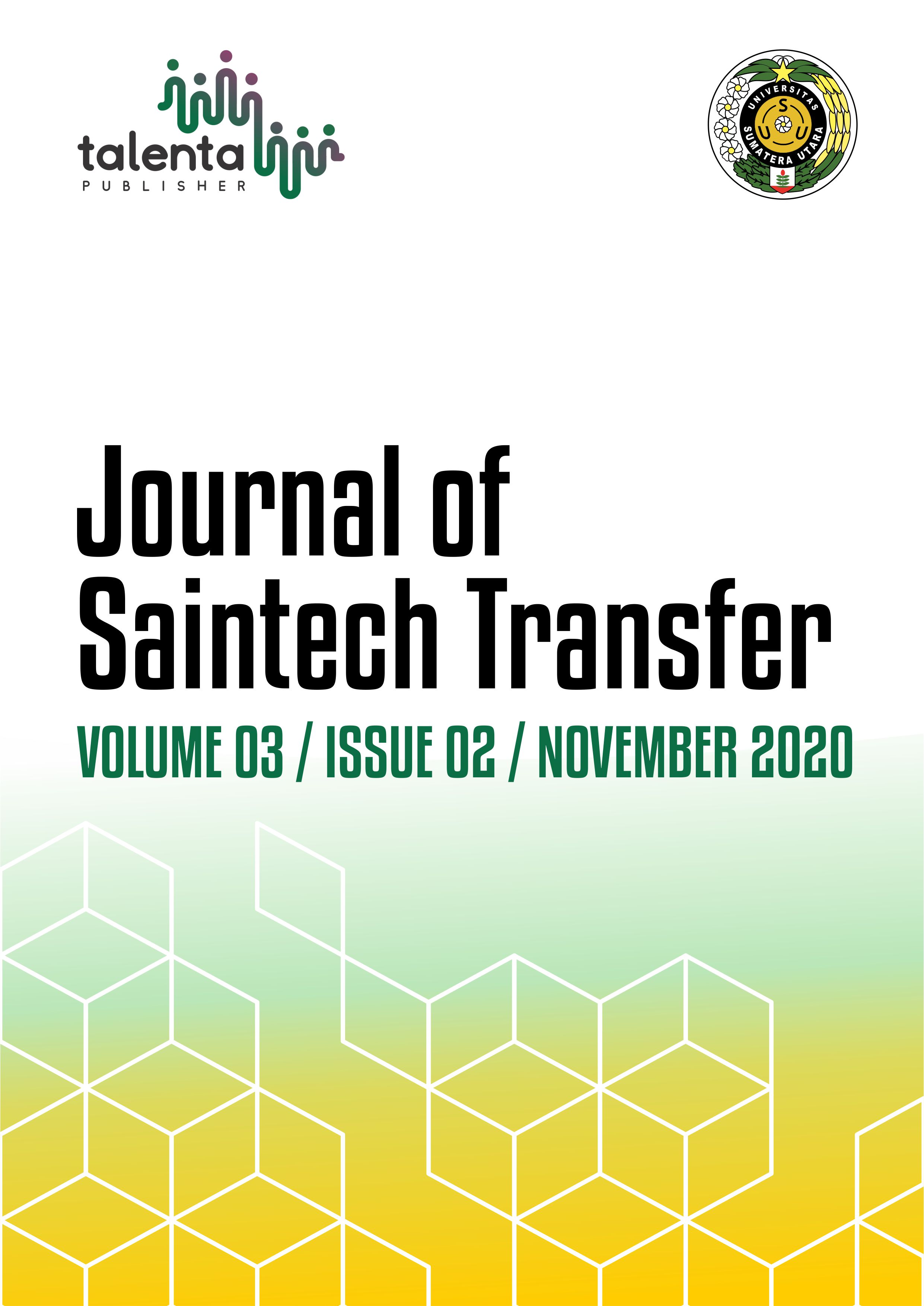Microbial Content Test on Sliced Papaya in Area of Universitas Sumatera Utara
DOI:
https://doi.org/10.32734/jst.v3i2.3967Keywords:
coliform, identification, most probable number, papayaAbstract
Papaya is a fruit that is often consumed in Indonesia and has increased consumption from 2015-2016 based on SUSENAS 2016. Papaya has high water content (85-90%) and the pH is near neutral. This makes papaya vulnerable and suitable medium for the growth of pathogenic microbes. The presence of pathogenic microbes in papaya can cause health problems for those who consumed them. Objectives this study was to observe the microbial content of sliced papaya in the Universitas Sumatera Utara. Method this research was carried out by conducting laboratory tests and the results obtained in the form of a description of microbial content in papaya cut samples. The content of coliform microbes in sliced papaya was tested using the Most Probable Number (MPN) method and biochemical identification. Papaya samples were selected using total sampling method from the University of Sumatera Utara. Results A total of 14 sliced papaya samples were analysed in this study. By using the MPN test it was found that all papaya samples had a microbial threshold exceeding those determined by SNI 7388: 2009 which is below <20 / g. A total of 9 papaya samples (64.28%) contained Klebsiella sp. bacteria, 5 samples (35.72%) contained E.coli bacteria. Conclusions Bacteria found in this study were Escherichia coli and Klebsiella sp. The presence of microbial content in the sliced papaya sample that exceeds the threshold must be a concern of various parties in the surveillance of snacks being sold.
Downloads
References
BPS. 2016. Konsumsi Buah dan Sayuran. Indonesia.
BSN. 2008. Metode Pengujian Cemaran Mikroba Dalam Daging, Telur, dan Susu Serta Hasil Olahannya. Indonesia
Cappuccino, J.G., and Welsh, C.T. 2017. Microbiology: A Laboratory Manual. 11th ed. Pearson, USA.
Hamidah, S. 2015. Sayuran dan Buah Serta Manfaatnya Bagi Kesehatan. MAFAZA, Indonesia.
Kementerian Kesehatan Republik Indonesia. 2019. Mari Makan Sayur dan Buah yang Berkhasiat Baik Bagi Tubuh Untuk Keluarga Indonesia Sehat. Available at: www.padk.kemkes.go.id/article/read/2019/05/14/11/mari-makan-sayur-dan-buah-yang-berkhasiat-baik-bagi-tubuh-untuk-keluarga-indonesia-sehat.html
Lal, A., Cheeptham, N. 2007. Eosin-methylene Blue Agar Plates Protocol. Available at: https://www.asmscience.org/content/education/protocol/protocol.2869
Lubis, N.D.A., Amelia, S., Arrasyid, N.K., and Rozi, M.F. 2019. Modelling of risk factors associated with foodborne disease among school-aged children in Medan, Indonesia. Open Access Maced J Med Sci. 7 (19) : 3302-3306.
Madigan, M.T., Martinko, J.M., Bender, K.S., Buckley, D.H., and Stahl, D.A. 2015. Brock Biology of Microorganism. Pearson, USA.
Mishra, M., Arukha, A.P., Patel, A.K., Behera, N., Mohanta, T.K., and Yadav, D. 2018. Multi-drug resistant coliform: water sanitary standards and health hazards. Front Pharmacol. 9 : 311.
Mukhopadhyay, A., Mitra, A., Roy, R., and Guha, A.K. 2002. An evaluation of street –vended sliced papaya (Carica papaya) for bacteria and Indicator mirco-organism of public health significance. Food Microbiology 19 : 663-667.
Strawn L.K., and Danyluk, M.D. 2010. Fate of Escherichia coli O157:H7 and Salmonella spp. On fresh and frozen cut mangoes and papaya. Int J Food Microbiol. 138 : 78-84.
Sopandi, T., and Wardah. 2014. Mikrobiologi Pangan [Teori dan Praktik]. Penerbit Andi, Yogyakarta.
Suketi, K., Poerwanto, R., Sujiprihati, S., Sobir, and Widodo, W.D. 2010. Karakter fisik dan kimia buah pepaya pada stadia kematangan berbeda. J. Agron. Indonesia 38 (1) : 60-66.
Qadri, O.S., Yousuf, B., Srivastava, A.K., and Yildiz, F. 2015. Fresh-cut fruits and vegetables: critical factors influencing microbiology and novel approaches to prevent microbial risks – A review. Cogent Food & Agriculture 1 : 1121606. DOI: 10.1080/23311932.2015.1121606.
WHO. 2019. Increasing Fruit and Vegetable Consumption to Reduce the Risk of Noncommunicable Diseases. Available at: https://www.who.int/elena/titles/fruit_vegetables/ncds/en/
Downloads
Published
How to Cite
Issue
Section
License
Copyright (c) 2020 Journal of Saintech Transfer

This work is licensed under a Creative Commons Attribution-ShareAlike 4.0 International License.















